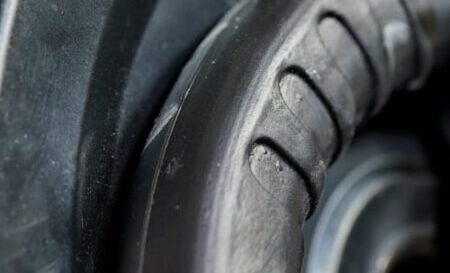The world of automotive systems has come a long way. Earlier, we used to mechanically operate brake shoes, now our cars consist of ABS systems which have made our lives easier. But all these components do need repairs and replacements after being operated for a long period.
The components that go through the most wear and tear are the brake pads of the car. Thus, it is always a great option to opt for Original Equipment Systems (OEM) braking systems. However, there are multiple options and it is difficult to choose the right brake pad for your car among all. Before the brake pad fully wears out it is advised to replace them to stay safe and secure. Here are major three things to consider before you choose the accurate brake pad for your car.
Understand the need to replace the brake pad:
Manufacturers of automotive systems suggest that brake pads must be replaced after they have completed about 30,000- 40,000 miles. The tires and the brakes work hand-in-hand, this is why it is advised to replace both brake pad and brake show at the same time. After you have driven about 50,000 miles there is a need to replace the brake pads for your vehicle.
The features you should look for in brake pads:
When you look to change your brake pads, you must consider the following features in your brake pad:
Performance in the different weather: Whether it is dry, cold, rainy, hot or wet, there would be no performance difficulty for the brake pads in any climate.
Friction level:
No matter what, if the brake pads are of good material, their friction the level will not be disturbed.
The lifetime:
Before buying the brake pads, you must ensure the lifetime of them. They should most likely to suffer from maximum wear and tear.
Vibration or noise:
Before buying the perfect brake pads, you must go through the noise and vibration check. So, you don’t have to deal with any major problems afterward.
Check for dust levels:
The brake pads are the major collectors of dust than the clings on the wheels. You must ensure to check for dust levels before you finalize the brake pads.
Look into different types of Brake pads:
Well, it is always a good option to opt for OEM brake pads, but before you finalize to buy the perfect brake pad for your car, you must look into the materials which are mostly used to make a brake pad:
Organic Brake pads:
These types of brake pads are built with materials like rubber, glass and Non-Asbestos Organic (NAO) that are eco-friendly and organic. They do not produce loud noises and are built of soft materials. Thus, there are greater chances of this type of brake pad to wear out easily and quickly.
Semi-metallic brake pads:
Most of the vehicle consist of semi-metallic brake pads nowadays. These comprise of metals like steel, iron, and copper from 30%to 70%. These kinds of brake pads are likely to perform better in different weather conditions and are also durable. The major disadvantage of this type is it produces more noise and dust as compared with the Organic one.
Ceramic Brake pads:
They fall under the most expensive category of brake pads built of ceramic fibres which are combined with filler materials. These are likely to last long but the drawback of this material is that they don’t work so well in the colder weather as the material with which it is made is likely to crack in the cold weather.
Conclusion:
No matter whichever type of brake pad you decide for your car; it is essential to install the brake pads safely to reduce further risks. It is always advised to install the brake pads under professional guidance in order to omit the risks that can cause dangerous incidents in the near future. You can always count on Harrad Auto services; the best auto mechanics in Brampton for your car maintenance and its services.
